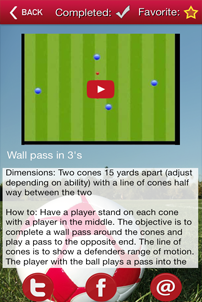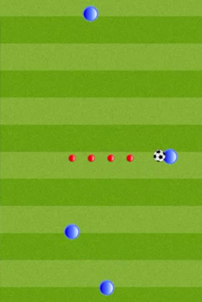Transactional Oracle Master Agreement ( Toma )
In particular, due to the large number of acquisitions by Oracle, the number of different terms for the different (legacy) agreements that Oracle and its customers had to manage between their companies has increased significantly. After the acquisition of Sun Microsystems, Oracle also began selling hardware solutions. The supply, warranties, and liabilities for hardware are obviously different from those for software (as Oracle has sold up to this point). As a result, Oracle moved from its OLSA to a new licensing agreement structure: the Oracle Master Agreement (OMA) in late 2013. It is common for software vendors to refer to various licensing rules and policies to govern the use of publishers` software products. For example, Microsoft Volume Licensing Agreements (e.B. MPSA or Enterprise Agreements) are the Product Terms of Service, the Online Terms of Service, and the Microsoft Online Services Service Level Agreement (among other documents) with specific references to these documents, details of the versions of the documents that will be controlled during the term of the agreement, and the URL of the websites where current versions of the documents can be found. Although the microsoft license terms may from time to time be somewhat ambiguous or difficult to enforce, the documents referenced in the Agreements are complete and serve to adequately define the parties` respective rights, obligations, and expectations with respect to the use of Microsoft`s products and services. As a result, certain conditions for each product and/or service or region in which customers operate had to be renegotiated again and again. Therefore, it was necessary to simplify this process through a new agreement: the OMA. All Oracle Order Documents (OD) are subject to a license agreement that has been previously signed and accepted. The License Agreement sets forth the “terms and conditions” that apply to all licenses, media, materials, or cloud ordered under this License Agreement.
Derogations from these general conditions, known as “atypical conditions”, are listed in the original order document. With the new OMA Agreement and the corresponding schedules, the following order of priority generally applies: (4) Various program-specific documentation sets listed in the Definitions and Licensing Rules section of Appendix P and also available at: oracle.com/contracts The OMA itself contains the terms and conditions under which Oracle sells its software and/or solutions. Different and specific schedules – which are an integral part of the agreement – establish the concepts, terms and conditions specific to the specified product and / or service. At the time you purchase a software license, you acquire the right to use particular software in accordance with the terms of the license agreement. If a particular use of the Software is not mentioned in your license agreement, you should not assume that you can use the Software in that way. You should at all times check with the Software Publisher to see if you can deploy and/or use the Software in the manner you wish (unless otherwise specified in the License Agreement). The rights and terms of use under which you may use the Software (including its limitations and limitations) are set forth in your Agreement and related documents. It is your duty to read, understand and comply with these Terms and Conditions at all times, even if they change over time. It is important to understand the terms of your existing license agreement (SLSA, OLSA, OMA) to ensure that you are aware of the rights and obligations you have and how deviations may affect the license.
Any reference to an online source (as contained in your license agreements) should be closely monitored to keep an eye on your rights and obligations. Failure to manage the terms of a license agreement under which certain licenses may have been acquired can have huge financial implications. There are examples we`ve seen with our end users where a single word of an agreement has been misunderstood and that have led to a huge financial risk of non-compliance. A license agreement can contain standard or non-standard negotiated clauses. There are other agreements that cover Linux and Oracle`s unbreakable VMs. The Oracle Framework Agreement is the current agreement that Oracle still applies today. The OMA was created to have a single agreement for Oracle customers to support the various business units within Oracle (e.B license sales, hardware sales, support sales, cloud sales, consulting sales, and university sales, etc.). After the introduction of the AMO, the duplication of the GTC was minimized and the readability of the agreement increased. After the introduction of the Internet, where licenses could be ordered through an online store, Oracle changed the SLSA to the Oracle License and Services Agreement. Like SLSA, OLSA established the terms and conditions under which Oracle sold its software and/or solutions. An OLSA was a transaction-based agreement included in every license order. However, if you access oracle.com/contracts, the ALT on the displayed page is not identified.
Instead, the page contains links to certain policy documents as well as subpages that contain information specific to the agreement. Clicking on the link to the “Oracle Framework Agreement” displays a page where the ALT is visibly missing. To access this document, it is necessary to click on the Link of the Oracle License and Service Agreement (OLSA), which is another type of framework agreement governing the use of Oracle products and services. We are often asked about the various Oracle license agreements that must be accepted when purchasing new software. Traditionally, the Oracle License Agreement was known as the Oracle License and Service Agreement (OLSA) and was accepted online or by signing a printed copy. You may want to consider supporting experts who can manage your licensing agreements and help your organization better understand your software resources. We can help you take control of your software assets. We offer a range of practical solutions through a combination of services and software. (3) The “Program-Related Service Offerings” document, also available at the following address: oracle.com/contracts Thank you for purchasing the primavera software from Primavera Scheduling, a division of Construction Science. You will receive an email from storeadmin@oracle.com with the following subject line and text: Unlike Microsoft`s contracts, there is also no “version control” language in the OMA to identify specific additional documents that have been included in the agreement. This fact provides Oracle with an excellent opportunity to change the terms with little or no notice.
In this article, we will focus on one software vendor, Oracle, and discuss the different types of license agreements that Oracle has had in the past, and explain the current license agreement that Oracle uses today: the Oracle Framework Agreement (OMA). (2) Oracle Technical Support Guidelines, also available at: oracle.com/contracts To understand what you are actually entitled to, a number of documents and sources must be regularly reviewed, analyzed, understood and maintained. It always starts with the license agreement itself, which has changed several times over the years: (1) “Program Documentation”, defined as “the program user guide and program installation manuals”, available at: oracle.com/documentation Leave a comment to let us know what you think of this topic! For all cloud services, Oracle manages the Cloud Services Agreement (CSA) in addition to the OMA. As a result of the above, it should be understood the following: Despite the fact that such a counterintuitive and aggressive policy is not expressly included anywhere in the OMA, LMS generally insists on this interpretation, possibly under the threat of termination of a customer`s licenses or escalation to litigation. Remember: All software purchases qualify for a 10% discount on training! Learn how to use Primavera P6 from Oracle University-certified experts. Courses are available online and in person. As of May 6, 2021, VMware will no longer offer perpetual licenses for VMware Horizon. Find out what this means for your business.
This kind of ambiguity regarding the location of saved terms may seem like a minor issue. Nevertheless, it complicates an already complicated licensing universe and provides LMS with another way to surprise Oracle customers with license requirements not previously identified during audits. A “model clause” is the text that describes the legal or business language used to create a contract. Clauses are created on the basis of commercial and legal requirements. .
Category : Uncategorized










